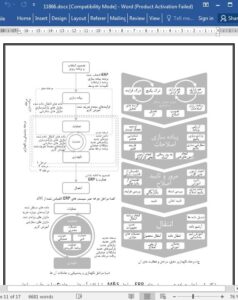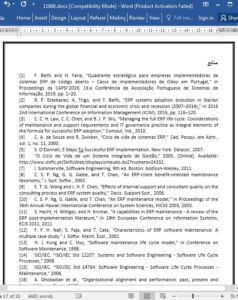Abstract
Organizations continue to adopt ERP systems. It seems to be a way to increase efficiency and gain advantages over competitors. Traditionally, decision, selection, planning, and implementation phases were the focus of ERP systems lifecycle. However, main problems of several implementation failures were related to lack of customer support and adequate maintenance. This paper presents a proposal of a maintenance and support (M&S) model within ERP systems lifecycle which includes 4 support activities and 41 maintenance activities separated by 4 phases, respectively, problem and modification analysis, implementation of modification, revision and acceptance phase and migration. Differently from others, at this model, the support is autonomous from maintenance, evidencing its role between operation and maintenance. It is also presented an action research performed in an ERP implementer company where an evaluation of maturity level of all 45 M&S activities were made. The analysis of existing M&S practices in this company allowed to understand this implementer has significant weaknesses with 20% of its processes (9) not or poorly implemented, and therefore, presenting great opportunities for improvement. Some of these practices were discussed.
1. Introduction
The adoption of ERP systems continues to be a way for organizations to gain competitive advantages over their competitors. Probably for this reason, it has been possible to verify that in the Europe there are increasing rates of adoption of ERP systems. In 2012, the adoption rate was around 22%, rising to 26% in 2013, 31% in 2014 and 36% in 2015. The growing adoption of ERP, whether proprietary or open source systems, implemented either in large or small or medium-sized companies (SMEs), continues to deserve investigation for their relevance. If, on the one hand, the ERP adoption is greater in large companies, on the other, it represents a great opportunity for SMEs. In Portugal, the ERP adoption ratio in 2014 also decreased with company size. Large companies had an adoption ratio of 90%, medium-sized companies around 60% and small companies registered an even lower adoption, close to 35% [1], [2].











